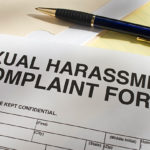In this age of exponentially increasing technology, we can rely on one certainty in property casualty jurisprudence – that is, bold policyholder assertions supported by even bolder “expert” opinions. In BF Advance, LLC v. Sentinel Insurance Company, No. 16-cv-5931 (E.D.N.Y. Mar. 20, 2018), decided in New York federal court this past March, the policyholder argued that a CGL policy’s Software Exclusion does not apply to injuries caused by software, and hired an insurance ... Keep Reading »
Eleventh Circuit Applies Realignment Doctrine to Undo Years of Coverage Litigation Between Primary and Excess Insurers
In St. Paul Fire and Marine Insurance Co. v. National Union Fire Insurance Co. of Pittsburgh, PA, No. 16-12015 (11th Cir. May 29, 2018), a battle between excess and primary carriers, the Eleventh Circuit applied the so-called “realignment doctrine” to long-running coverage litigation and held that the district court never had jurisdiction over the matter in the first place. The underlying dispute arose out of several explosions at an Imperial Sugar Co. refinery in ... Keep Reading »
An Expert Is Only as Good as His Actual Experience
Experts are often used to address issues of causation and scope of damages in insurance coverage matters. It is well established, however, that an expert must be qualified through specific training or actual experience. Without such training or experience, a purported expert’s affidavit may not be sufficient to create an issue of material fact sufficient to defeat summary judgment. Such was the lesson in Superhost v Selective Ins (NY App 2018-04-12), Case No. 525034 (NY ... Keep Reading »
Eleventh Circuit Affirms No Coverage Under Computer Fraud Provision of Insurance Policy
On May 10, the U.S. Court of Appeals for the Eleventh Circuit affirmed the decision of the U.S. District Court for the Northern District of Georgia in InComm Holdings, Inc. v. Great American Insurance Company. The Eleventh Circuit agreed that Great American’s computer fraud coverage did not apply to holders of prepaid debit cards who exploited a coding error in the insured’s computer system and fraudulently increased the balances on the cards which caused InComm to incur ... Keep Reading »
Fidelity Coverage for Social Engineering Scams: The Ninth Circuit Upholds an Authorized Use Exclusion
Losses from social engineering schemes continue to grow exponentially. According to FBI data published in early 2017, losses from these schemes totaled over $3 billion between 2013, when the FBI started tracking data, and the end of 2016. One recent estimate suggests projected growth to over $9 billion in 2018 alone. The problem is not going away; it's getting much, much worse. Under these schemes, perpetrators trick company employees into believing that they have ... Keep Reading »
New York’s Highest Court Rejects ‘Unavailability of Insurance Exception’ Under ‘Pro Rata Time on the Risk Allocation’
On March 27, the New York Court of Appeals unanimously ruled that under a “pro rata time on the risk allocation,” insurers are not liable for years outside their policy periods when there was no insurance available to the insured in the marketplace. See KeySpan Gas East Corp. v. Munich Re. Am., Inc., 2018 N.Y. Slip Op. 02116 (N.Y. Mar. 27, 2018). The decision is a significant victory for insurers faced with long-tail environmental claims, and may also lend support to ... Keep Reading »
Drawing a Line in the Sand: The Second Circuit Tries to Define Where D&O Coverage Ends and E&O Coverage Begins
Policyholders often obtain both errors and omissions (E&O) and directors and officers (D&O) liability insurance policies because they provide complementary coverage. E&O policies provide coverage for claims for wrongful acts arising from the provision of "professional services," and while D&O policies also provide coverage for claims for wrongful acts, they often exclude coverage for such claims arising from the provision of professional services. Despite ... Keep Reading »
AIG Won’t Have to Defend Carfax in $50 Million Antitrust Suit
On March 1, a New York appeals court ruled that American International Group, Inc. (AIG) need not defend Carfax, Inc. against a $50 million suit alleging the company monopolized the vehicle history report market. The decision affirmed the lower court’s determination that the matter did not fall within the insuring agreement and that, even if it did, it would be precluded from coverage based on the application of the policy’s antitrust exclusion. In May 2017, AIG ... Keep Reading »
‘Me Too’ Coverage Implications for Employers
When an employer negligently supervises an employee who commits separate acts of sexual harassment against three different co-workers on separate occasions, how many "occurrences" are there under a standard commercial general liability policy? The Northern District of Ohio, Eastern Division, considered this question in Scott Fetzer Co. v. Zurich Am. Ins. Co., No. 16 CV 1570 (N.D. Ohio Dec. 18, 2017), and concluded that the answer is three. Three Times the Harassment In ... Keep Reading »
Dot the I’s and Cross the T’s: the Importance of Clarity in Claim Communications and the Availability of Punitive Damages for an Insurer’s Bad Faith Failure to Settle
The Georgia Court of Appeals recently made waves in Hughes v. First Acceptance Insurance Company of Georgia, Inc., 343 Ga. App. 693 (2017). First, it aggrandized the role of a jury in determining the existence of an offer to settle a claim where the text of purported offer letters was not in dispute. Second, it subtly reminded litigants that punitive damages are available in a bad faith failure-to-settle claim where the claim sounded in tort and had not been ... Keep Reading »
- « Previous Page
- 1
- …
- 24
- 25
- 26
- 27
- 28
- …
- 48
- Next Page »









